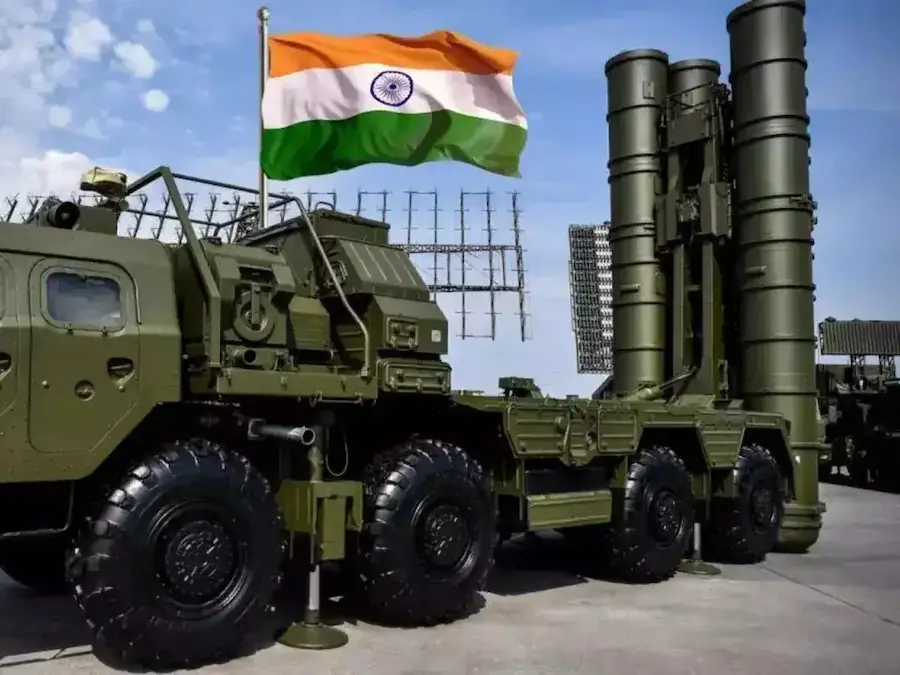
Project Kusha Empowers India with Unmatched Aerial Defense Against Stealth Threats
Neutralize Threats from 500 km Away – In a bold stride toward strategic autonomy and aerial supremacy, India has launched Project Kusha, a long-range missile defense system designed to intercept and destroy stealth aircraft, drones, and ballistic missiles from adversaries like Pakistan and China. Developed indigenously by the Defence Research and Development Organisation (DRDO), this ambitious initiative marks a seismic shift in India’s defense posture and technological capabilities.
A Divine Name for a Deadly Shield
Named after Kush, the son of Lord Rama, Project Kusha carries both mythological symbolism and modern military might. The system is engineered to act as an impenetrable shield against incoming aerial threats, with the ability to detect and neutralize targets up to 500 kilometers away. It’s not just a missile, it’s a multi-layered defense architecture that rivals Russia’s S-500 and even surpasses the S-400 in certain operational parameters.
The system comprises three interceptor variants:
- M1: 150 km range, optimized for drones, cruise missiles, and stealth aircraft.
- M2: 250 km range, designed to eliminate AWACS and anti-ship ballistic missiles.
- M3: 350–400 km range, capable of targeting large aircraft and medium-range ballistic missiles.
Each interceptor is equipped with advanced kill vehicle technology, thrust vector control, and dual-pulse solid rocket motors, ensuring high-speed engagement and precision targeting. The radar system integrated into Kusha can detect threats from 500 km away, giving India a critical edge in early warning and response.
Strategic Deterrence Against Pakistan and China
India’s defense planners have long been wary of the growing military nexus between China and Pakistan. With Beijing supplying Islamabad with advanced aircraft, missiles, and surveillance systems, the threat matrix has become increasingly complex. Project Kusha is India’s answer to this evolving challenge, a deterrent that not only protects but projects power.
The system is designed to intercept:
- Stealth fighters like China’s J-20
- Hypersonic drones and loitering munitions
- Cruise and ballistic missiles launched from Pakistani territory
During Operation Sindoor earlier this year, India demonstrated its ability to strike targets from 250-450 km away using long-range weapons like BrahMos and SCALP. Project Kusha builds on that success, offering a defensive complement to India’s offensive capabilities. The deployment of Kusha is expected to force adversaries to rethink their aerial strategies, potentially altering flight paths and reducing operational confidence.
Neutralize Threats from 500 km Away – Indigenous Innovation Meets Tactical Integration
What sets Project Kusha apart is its complete reliance on indigenous technology. Spearheaded by DRDO and supported by Bharat Electronics Limited (BEL), the system is a testament to India’s growing self-reliance in defense manufacturing. It integrates seamlessly with the Indian Air Force’s Integrated Air Command and Control System (IACCS), allowing real-time coordination with existing assets like Akash, Barak-8, and the Russian-supplied S-400.
The phased development timeline includes:
- M1 trials: Scheduled for September 2025
- M2 and M3 trials: Expected in 2026 and 2027 respectively
- Full induction: Between 2028 and 2030
Once operational, five squadrons of Project Kusha will be inducted into the Indian Air Force, significantly enhancing India’s layered air defense grid. The system’s modular design also allows for future upgrades, including integration with naval platforms and space-based sensors.
A New Chapter in Global Defense Dynamics
Project Kusha isn’t just a national achievement, it’s a geopolitical statement. In a world where air superiority defines strategic dominance, India’s ability to develop a system comparable to the S-500 and THAAD positions it among the elite few with advanced missile defense capabilities.
The timing is crucial. With rising tensions in the Indo-Pacific, border skirmishes in Ladakh, and increasing drone incursions from Pakistan, India needed a solution that was both robust and forward-looking. Project Kusha delivers on both counts.
Moreover, the system aligns with India’s broader vision of Aatmanirbhar Bharat (self-reliant India), reducing dependence on foreign suppliers and enhancing export potential. Defense analysts believe that once proven in trials, Kusha could attract interest from friendly nations seeking affordable and effective air defense solutions.
Stay updated with latest updated news blogs on Rapido Updates.